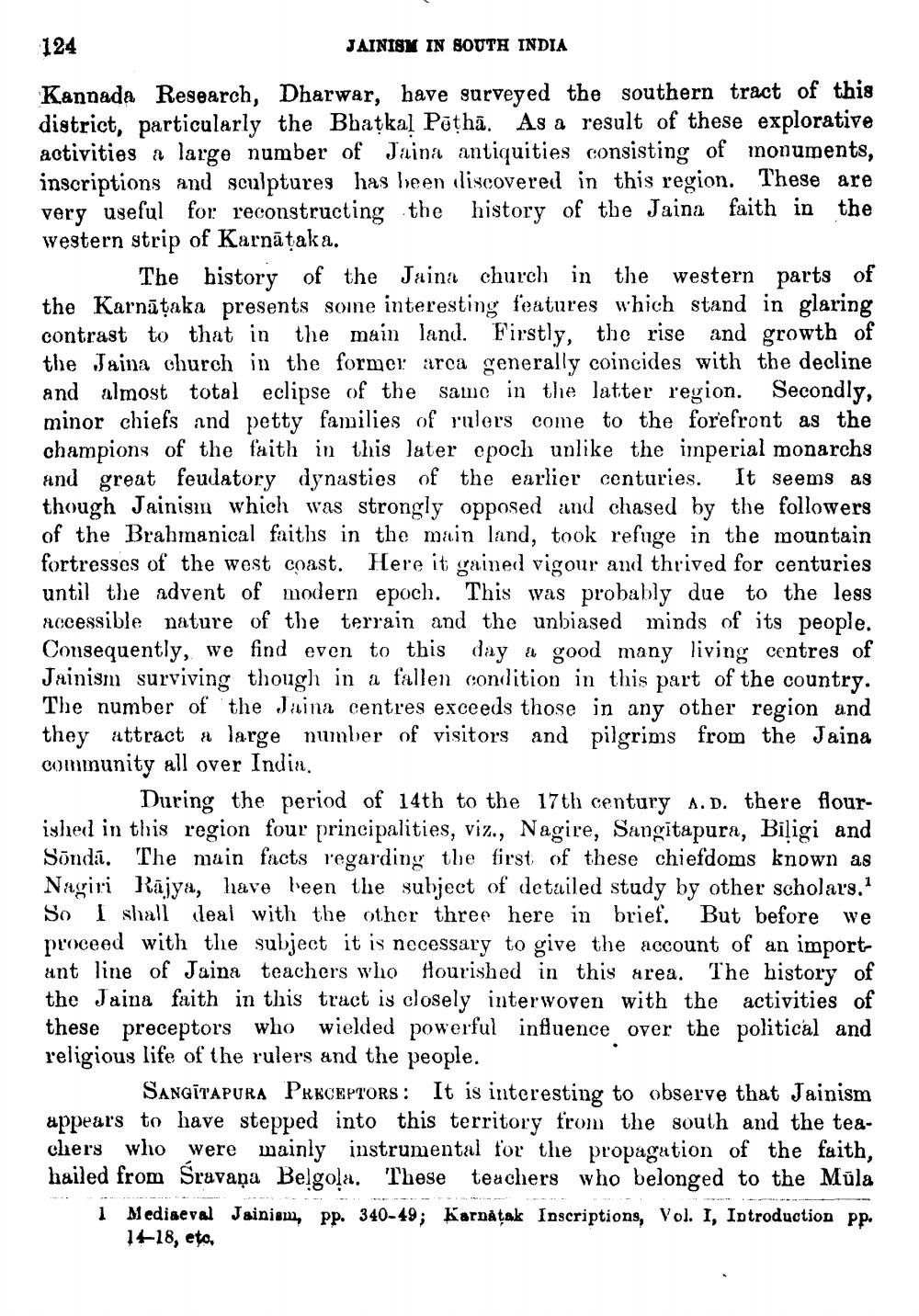________________
124
JAINISM IN SOUTH INDIA Kannada Research, Dharwar, have surveyed the southern tract of this district, particularly the Bhatka! Pothā. As a result of these explorative activities a large number of Jaina antiquities consisting of monuments, inscriptions and sculptures has been discovered in this region. These are very useful for reconstructing the history of the Jaina faith in the western strip of Karnataka.
The history of the Jaina church in the western parts of the Karnāțaka presents some interesting features which stand in glaring contrast to that in the main land. Firstly, the rise and growth of the Jaina church in the former arca generally coincides with the decline and almost total eclipse of the same in the latter region. Secondly, minor chiefs and petty families of rulers come to the forefront as the champions of the faith in this later epoch unlike the imperial monarchs and great feudatory dynasties of the earlier centuries. It seems as though Jainism which was strongly opposed and chased by the followers of the Brahmanical faiths in the main land, took refuge in the mountain fortresses of the west coast. Here it gained vigour and thrived for centuries until the advent of modern epoch. This was probably due to the less accessible nature of the terrain and the unbiased minds of its people. Consequently, we find even to this day a good many living centres of Jainism surviving though in a fallen condition in this part of the country. The number of the Jaina centres exceeds those in any other region and they attract a large number of visitors and pilgrims from the Jaina community all over Indin.
During the period of 14th to the 17th century A.D. there fourished in this region four principalities, viz., Nagire, Sangitapura, Biligi and Sõndā. The main facts regarding the first of these chiefdoms known as Nagiri Rājya, have been the subject of detailed study by other scholars." So I shall deal with the other three here in brief. But before we proceed with the subject it is necessary to give the account of an important line of Jaina teachers who Hourished in this area. The history of the Jaina faith in this tract is closely interwoven with the activities of these preceptors who wielded powerful influence over the political and religious life of the rulers and the people.
SANGĪTAPURA PRECEPTORS: It is interesting to observe that Jainism appears to have stepped into this territory from the south and the teachers who were mainly instrumental for the propagation of the faith, hailed from Sravaņa Belgola. These teachers who belonged to the Müla
i Mediaeval Jainism, pp. 340-49; Karnatak Inscriptions, Vol. I, Introduction pp.
14-18, eto.




